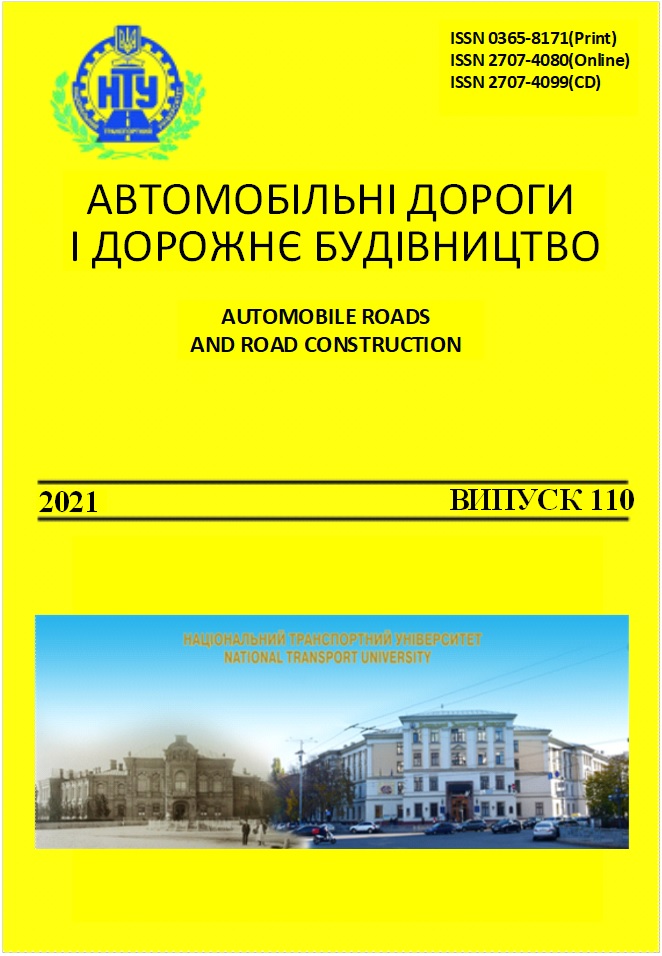DETERMINATION OF THE RATIONAL LEVEL OF MECHANIZATION OF ROAD PRODUCTION
Mykola Lykhostup, National Transport University, Associate Professor, Department of Transportation Construction and Property Management, https://orcid.org/0000-0001-8139-1768
Yuriy Varfolomeev, National Transport University, Associate Professor, Department of Transport Construction Machines, https://orcid.org/0000-0001-5388-6624
Abstract: The constant aspiration of a person to replace manual labor with the work of machines and mechanisms is reproduced in such concepts as "mechanization", "automation", "machine-tool" and others. In the construction industry, the most common and most favorable for the disclosure of this desire is an indicator of the level of mechanization. But in the techniques and recommendations that provide advice on the definition of this indicator, its calculation is carried out using generalizations of mechanization of labor without giving any clear representations as to the determination of production volumes in a purely mechanized way.The article reveals the essence of the indicator of the level of mechanization of road production, which determines the expediency of improving the structure of the main production assets of the enterprise for the implementation of such a program of work, which would contribute to maximizing profits. In general, the definition of the rational level of mechanization is based on the implementation of an iterative algorithm, which includes a number of stages.Thus, at the first stage, the initial (basic) program of a road organization is determined using data on the quantity and quality of the main production assets and the usual program of work for this enterprise. Determining the structure of this program, consisting of a number of road works and labor processes, in turn, is carried out using the developed algorithm, which involves the maximum technological use of all types of resources, including technical, which contribute to the mechanized mode of work. Next, using the data on the structure of the works, it is possible to obtain the estimated value of profit that can be obtained as a result of the implementation of the initial program of work.
On the basis of the information about the estimated value of profit formed part of it in the form of a production development fund. The size of the fund for the development of production is the basis for reforming the machine park of the road organization. Options for changing the quantitative and qualitative composition of the machine park include the steps to assess their residual value, the purchase of new machines, major repairs or replacement of existing units of equipment.
Using the data of various variants of the modernization of the park of machines and mechanisms, the corresponding changes for working hours for them are determined for the year, that is, the initial annual of working time is recalculated. The updated information on annual working time funds is used to determine the appropriate modifications to the park of machines of the work program of the road organization. For each option of updated programs of work determined by the calculated profit, and its maximum value is approved rational program of work.
At the last stage, using data on total costs of manual and mechanized labor, as well as data on the total number of performers, indicators are calculated that characterize the level of mechanization of a road enterprise. The obtained indicators, as characteristics of the level of mechanization, can be used to solve various tasks in the field of road production management.
Article language: English
Referenses:
- Kudrjavzev Е. М. Кompleksnaja mechanizazija, avtomatizazija i mechanovooruschennost stroitelstva. Е. М. Кudrjavzev. М.: Stroyizdat, 1989. 246 s.
- Belezkiy B. F. Тechnologija i mechanizazija stroitelnogo proizvodstva. Izd. 3 – th. /B. F. Belezkiy – Rostov n/D: Rostov, 2004. 752 s.
- DSTU - N B D.1.1-3:2013. Nastanova schto do vyznachennja zagalnovyrobnychyx i administratyvnyx vytrat ta prybutky u vartocti budivnyztva // Minregion Ukrainy. К:, 2013. 36 с.
- DSTU B D.2.2. Resursni elementni koshtorysni normy na budivelni roboty. Zb. 1 - 30, (REKN). Мinregion Ukrainy. К:, 2013.
- SOU 45.2-00018112-035:2010. Resursni elementni koshtorysni normy na remontno-,udivelni roboty. Avtomobilni dorogy i mosty. Derschavna sluschba avtomobilnyx dorig Ukrainy (Ukravtodor). К:, 2010. 216 s.
- Likhostup М.М., Leont’ev JU.М. Vplyv faktora vyznatschennja vyrobnytyschoi potuschnosti na riven vykorystannja resursav d doroschniy galyzi. Avtomobilni dorogy i doroschne budivnyztvo. Vyp. 63. К: Vyd-vo NТU, 2001. S.148–151.
- Кovalev А. P. Оzenka stoimosri aktivnoy tschasti osnovnych fondov. А. P. Кovalev. М.: Finstatinform, 1997. 175 s.
- Garmanov Е. N. Ekonomitcheskaja effektivnost doroschnogo xozjaystva. Е. N. Garmanov. М.: Тransport, 1984. 173 s.
Open Access: http://publications.ntu.edu.ua/avtodorogi_i_stroitelstvo/109/198.pdf
Online publication date: 25.02.2021
Print date: 01.02.2021
